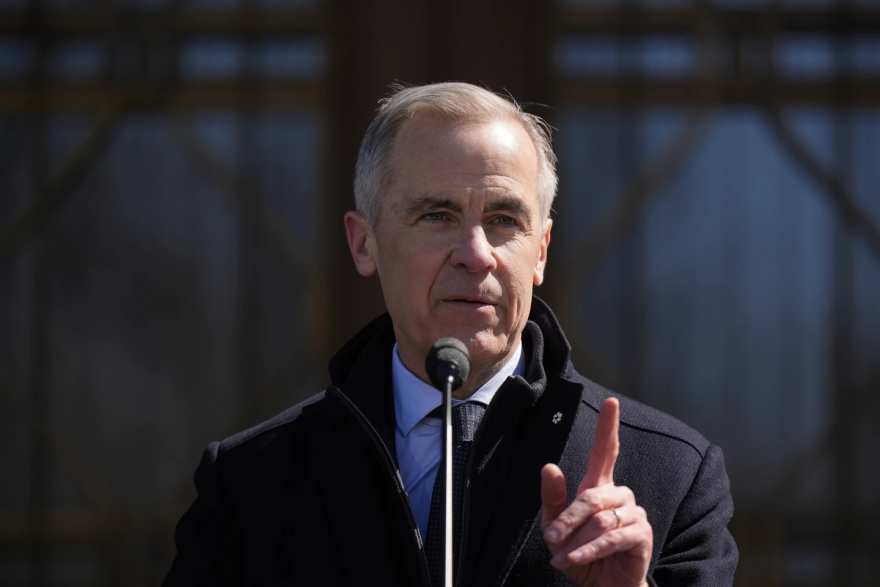National campaigning is now underway in Canada, as Prime Minister Mark Carney asked the governor-general to dissolve parliament. Canadians will head to the polls on April 28th. Analysts agree this election will be fought on one main issue – which party leader can best deal with President Donald Trump and his tariffs.
“I’m asking Canadians for a strong positive mandate to deal with President Trump. And to build a new Canadian economy that works for everyone,” Carney said.
Mark Carney launched his campaign outside the governor-general’s residence—less than two weeks after being sworn in as prime minister. His decision to call an early election is likely fueled by momentum from his leadership win, and a growing trade war with Washington. A snap election now gives him 37 days to win the confidence of Canadians for his Liberal Party, six months before the fixed election date.
Parliament was to resume today after former Prime Minister Justin Trudeau prorogued Parliament – the move that resulted in Carney becoming his successor. But now Carney has chosen the shortest possible campaign period allowed under Canadian law.
Since taking office, Carney has already made significant moves—eliminating the unpopular carbon tax and reversing a capital gains tax hike. Yesterday, he also promised a one-percent tax cut for the middle class. But he says there’s still work to do—and he wants voters to give him a mandate to continue.
“We are facing the most significant crisis of our lifetime because of President Trump’s trade actions and because of his threats to our sovereignty. Our response must be to build a strong economy and a more secure Canada. President Trump claims that Canada isn’t a real country. He wants to break us so America can own us. We will not let that happen. We’re over the shock of the betrayal but we should never forget the lesson. We have to look out for ourselves,” Carney said.
For the past couple of years, the Liberals under former Prime Minister Justin Trudeau have trailed in polls. The Conservatives enjoyed a double-digit lead and tried, at times, desperately to bring down the minority liberal government. Since Trudeau resigned and Carney was chosen to head the party, that Conservative lead has evaporated, with polling data now showing the two parties neck and neck – some even suggesting the Liberals with a lead.
The Conservatives, who focused much of their campaigns on Trudeau, have been slow to pivot against Carney. But their leader, Pierre Poilievre, is sticking to familiar criticisms.
“They lost the pipeline that would have allowed us to go around the American market. They’ve killed LNG liquefaction plants, forcing us to sell all of our natural gas to the Americans at huge price discounts. They’ve weakened our military and our borders. All of that plays into the hands of President Trump. He’s been very blunt that he wants a weak Canada that he can target,” Poilievre said.
However, several policies of the Conservative message have been either implemented or promised by Carney. So, Poilievre, who has been the Conservative leader since 2022, could find himself in a tough spot unless he finds a strong message that resonates with voters.
The New Democratic Party—once a key power broker in Trudeau’s years-long minority government—is now fighting for survival. Leader Jagmeet Singh will remind voters that his party propped up the Liberals in exchange for national programs like dental care and pharmacare. But as the race narrows to a two-party fight, the NDP risks being squeezed out.
So, what will drive Canadians to the polls on April 28? First, Donald Trump—followed closely by the economy. Pollster Nick Nanos says Trump’s influence is unavoidable.
“It’ll be trial by fire because of the impact, I’ll call it the overhang, of Donald Trump. And how he represents another wild card for all the party leaders that they’ll have to grapple with basically on an hour-by-hour basis,” Nanos said.
There are 343 seats up for grabs. Nearly 28 million Canadians are eligible to vote—650,000 more than in the last election. But the only number that matters is 172—that’s the number of seats needed for a majority government.



